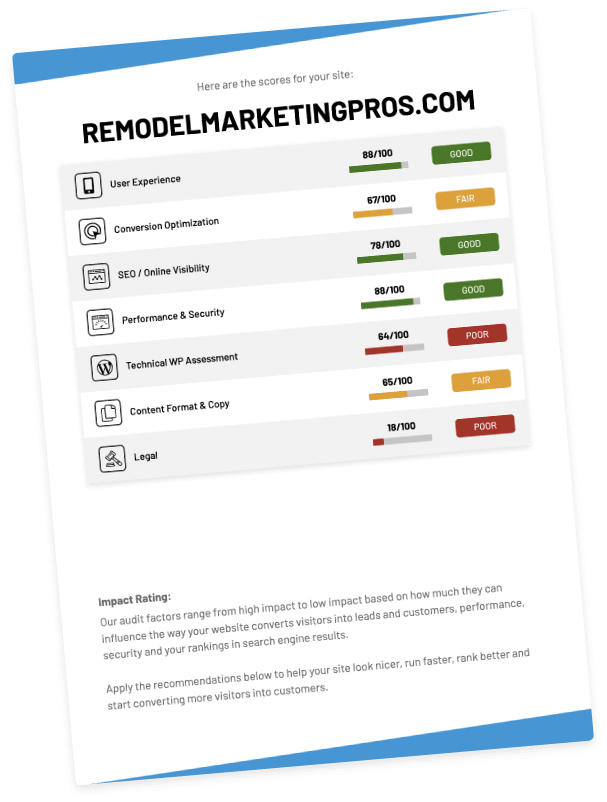For any business operating online, using clear and compliant website legal policy pages is essential.
These documents not only fulfil legal obligations but also foster trust by transparently communicating how user information is managed to your visitors.
Whether you’re a burgeoning startup or an established company, ensuring your website adheres to Australian legal standards is crucial for both protecting your business and reassuring your customers.
Please note that this article is for informational purposes only and does not constitute legal advice. Consult a qualified legal professional for specific legal advice tailored to your individual circumstances.
What Legal Pages Do I Need On My Website?
Figuring out which legal pages your website requires can seem overwhelming so here’s a quick overview to the most crucial ones to get you started:
- Terms of Use: Defines the terms under which users interact with your site, crucial for safeguarding your content and reducing liability.
- Privacy Policy: Essential for sites that collect user data, clarifying how this information is processed (i.e. contact forms, newsletter sign-ups, e-commerce checkouts and more).
- Cookie Policy: Important for websites that use cookies to understand user behaviours or store information, it explains the tracking mechanisms in place to users.
- Shipping Policy: Necessary for e-commerce sites that sell physical products, outlining how goods are shipped to customers.
- Returns & Refunds Policy: Key for e-commerce businesses to handle returns and refunds in a legal manner.
- Accessibility Statement: Increasingly vital, ensuring that your website can be used by everyone, including individuals with disabilities.
Each of these documents is vital for transparent operation and compliance with Australian law.
In the following sections we will delve into each policy in depth to help you create or improve your own.

Terms of Use
Terms of Use (also known as Terms and Conditions or Terms of Service) define the rules and guidelines that users must agree to and follow in order to use your website.
These terms serve as a legal contract between you and your users and are crucial for protecting your site. They help manage user behaviour, protect your intellectual property and limit liability.
Key Components of Terms of Use
Effective Terms of Use should cover several key areas:
- Acceptance of Terms: How users accept the terms, often by using the website.
- Description of Service: Explanation of what the website offers and any limitations.
- User Conduct: What behaviours are prohibited, such as harassment or posting illegal content.
- Intellectual Property Rights: Clarification of ownership of content on the site and usage rights.
- Limitation of Liability: Limits the website owner’s liability in cases of errors in content or site downtime.
- Termination of Use: The circumstances under which a user or the website can terminate use.
- Dispute Resolution: How disputes related to the terms will be handled.
How to Create a Terms of Use
Drafting Terms of Use involves:
- Identifying the nature of your service: Clearly define the scope of your services and any specific user requirements.
- Considering user interaction: Think about how users interact with your site and any necessary rules to govern this interaction.
- Consulting legal standards: Ensure your terms comply with local and international laws, especially if you operate across borders.
- Using clear language: Write in plain language to ensure users understand their rights and obligations.
- Regular reviews: Update your terms as your services evolve and as legal requirements change.
Terms of Use are not just a legal requirement but also a foundation for the safe and responsible operation of a website.
They set clear expectations for users and provide a legal safeguard for site owners.

Privacy Policy
A website Privacy Policy is a legal statement that explains how a company collects, handles and processes data of its visitors and customers.
It’s crucial for transparency, building trust and fulfilling legal obligations under privacy laws.
This document is particularly important as it’s not only a legal requirement but also a cornerstone of consumer trust and data protection.
Even some third-party tools you’re likely using on your website likely require you to use a Privacy Policy.
For example, Google Analytics requires that you have an appropriate Privacy Policy available on your website if you’re using their tools.
Key Components of a Privacy Policy
The content of a Privacy Policy should be comprehensive and clear. Key components typically include:
- Information Collection: What data is collected, both directly and indirectly, through forms, cookies or analytics tools.
- Usage of Information: How the data is used, such as for improving services, personalisation of content or marketing purposes.
- Data Sharing: Whether data is shared with third parties and under what circumstances.
- User Rights: Details on how users can access, modify and delete their personal information.
- Data Protection: The measures taken to protect user data from unauthorised access and breaches.
- Contact Information: How users can contact you if they have privacy concerns or need more information.
How to Create a Privacy Policy
Creating an effective Privacy Policy involves several steps:
- Review your data needs: Understand what data you collect and why it’s necessary.
- Be transparent and clear: Use plain language to ensure users understand what data you collect and how you use it.
- Comply with local laws: Make sure your policy complies with privacy laws applicable to your jurisdiction, such as the Australian Privacy Principles monitored by the Office of the Australian Information Commissioner (OAIC).
- Regular updates: As your business or privacy laws change, update your policy accordingly.
- Accessibility: Ensure the policy is easy to find and accessible on your website, typically in the footer.
Still unsure if you need a Privacy Policy? Review the Privacy Act 1988 to determine if it applies to your website. This legislation, alongside the Australian Privacy Principles, governs the management of personal data and is essential to consult if you have any questions.
Cookie Policy
A Cookie Policy is a document that explains how a website uses cookies, which are small files placed on a user’s device to collect and store information.
This policy is crucial for transparency and complying with legal requirements like the GDPR for users from the European Union and similar regulations worldwide.
Key Components of a Cookie Policy
Essential elements of a Cookie Policy include:
- Types of Cookies Used: Detailed information on the different cookies your website uses, such as functional, analytical and advertising cookies.
- Purpose of Cookies: Explanation of what each type of cookie does, e.g., remembering user settings, tracking website usage for analytics.
- User Consent: How the website obtains and records user consent for cookies, reflecting legal standards.
- Managing Cookies: Instructions on how users can manage and delete cookies through their browser settings.
How to Create a Cookie Policy
To draft an effective Cookie Policy:
- Assess cookie use: Determine what types of cookies your website uses and their purpose.
- Draft clearly: Use plain language to ensure users understand their consent.
- Update regularly: Keep the policy up-to-date with any changes in cookie usage or law.
- Ensure accessibility: Make the policy easy to find, often linked in the footer alongside Privacy Policy.

Shipping Policy
Shipping policies are critical for eCommerce websites, outlining how products are shipped to customers.
These policies provide clarity and build trust by informing customers about shipping methods, costs and timelines.
Key Components of a Shipping Policy
A comprehensive Shipping Policy should include:
- Shipping Methods Available: Different shipping options offered, such as standard, express and international shipping.
- Costs: Detailed pricing for each shipping method, possibly varying by location and weight.
- Delivery Times: Expected delivery times for each shipping method.
- Geographical Limitations: Any restrictions on where products can be shipped.
- Handling Times: Time taken to process orders before shipping.
How to Create a Shipping Policy
To create clear and effective Shipping Policies:
- Define your terms: Clearly outline all aspects of your shipping process.
- Be transparent: Clearly communicate costs and delivery times to avoid customer dissatisfaction.
- Comply with laws: Ensure your policies comply with local and international shipping regulations.
- Update as needed: Regularly update your policies to reflect changes in costs, carriers, or service levels.

Returns & Refunds Policy
Returns and Refunds Policies are vital for e-commerce sites to manage how goods can be returned by customers and under what conditions refunds are given.
These policies are crucial for customer satisfaction and compliance with consumer law.
Key Components of a Returns & Refunds Policy
A detailed Returns and Refunds Policy should cover:
- Conditions for Returns: Specify what conditions must be met for an item to be returnable (e.g., within 30 days, in original packaging).
- Process for Returns: Outline the steps customers need to take to return a product.
- Refund Details: Clarify whether refunds are offered as store credit, replacements, or monetary returns and under what circumstances.
- Responsibility for Shipping Costs: State who is responsible for the return shipping costs.
How to Create a Returns & Refund Policy
To draft effective Returns and Refunds Policies:
- Clarify terms: Be clear and specific about what is returnable and under what conditions.
- Simplify the process: Make the process as easy as possible for customers.
- Stay compliant: Ensure your policy complies with local consumer rights laws.
- Update regularly: Adjust your policies as needed based on customer feedback and legal changes.

Accessibility Statement
Accessibility Statements demonstrate a commitment to making websites usable by everyone, including people with disabilities. They are not only a reflection of inclusivity but increasingly a legal expectation.
Key Components of an Accessibility Statement
Effective Accessibility Statements should include:
- Commitment to Accessibility: State your commitment to making your website accessible.
- Accessibility Standards: Reference the standards followed, such as WCAG (Web Content Accessibility Guidelines).
- Current Accessibility Features: Detail the features already implemented to enhance accessibility.
- Feedback and Contact Information: Provide a way for users to report accessibility issues and contact information for further inquiries.
How to Create an Accessibility Statement
To create a robust Accessibility Statement:
- Evaluate your website: Assess how accessible your site is and identify areas for improvement.
- State clear goals: Be specific about your commitments and the standards you adhere to.
- Provide contact options: Ensure users have a way to communicate with you about accessibility issues.
- Review and update: Regularly revisit your statement to reflect any changes or improvements in accessibility.
Frequently Asked Questions
How do I add a legal policy page to my website?
Start by creating the content for the page such as a Privacy Policy or Terms of Use. Once the content is ready, create a new page on your website through your content management system like WordPress or Shopify and paste your legal text into this new page. A web developer can help you with this if needed.
Finally, link to this page from accessible areas such as your website footer or header, ensuring it is easy for users to find. Regularly update these pages to reflect any changes in laws or your business practices.
What is a Privacy Policy and why is it important?
A Privacy Policy is a legal statement that details how a company collects, uses and manages a customer’s data. It is crucial for transparency and maintaining trust and it’s legally required for businesses collecting personal information in Australia.
How often should I update my Terms of Use?
You should review and potentially update your Terms of Use annually, or whenever there are significant changes to your service or relevant laws, to ensure ongoing compliance and relevance.
What should a Cookie Policy include?
A Cookie Policy should include information on the types of cookies used by your website, their purpose, how they affect user privacy and how users can manage their cookie preferences.
Is a Shipping Policy necessary for all e-commerce sites?
Yes, a Shipping Policy is essential for all e-commerce sites as it outlines the terms under which products are delivered to customers, including shipping methods, costs and delivery times.
To your success,
Jackson




